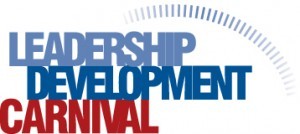S. Chris Edmonds's Blog, page 16
October 19, 2015
Change is Hard
 The one thing that I keep learning as a human on this planet is that change isn’t easy. It’s not fun – at least not at the start. It’s hard work.
The one thing that I keep learning as a human on this planet is that change isn’t easy. It’s not fun – at least not at the start. It’s hard work.
One recent change I’ve been struggling with is my new leg brace, pictured at right. I have CMT, a neurologic disease that causes calf atrophy, foot drop, and instability while standing or walking. I’ve suffered from the symptoms for over 20 years. I thought the calf atrophy was due to my two back surgeries over the years, so didn’t think anything of it. It was how I walked.
The brace is a pretty cool little device – custom molded to my foot and leg, carbon fiber so light as a feather. The stiffness of the carbon fiber holds my foot flat and holds it in alignment with the leg and knee. That’s the way skeletal alignment is supposed to work, but with my foot drop, I’ve walked out of alignment for 20 years.
The hard part I’m experiencing is that walking in alignment is causing much hip pain and back pain. Why? Because I’ve grown accustomed to accommodating my leg weakness and foot drop. My current gait is very distinct. I throw my right leg out while walking so my foot falls flat, rather than rolling (like a sprained ankle), causing me to catch myself or fall over.
The brace aligns my foot, calf, and knee as it’s supposed to be aligned. My hip and back aren’t used to that new alignment. Muscles are working differently. And, they’re not happy – nor are the nerve endings.
The leg brace is good for me. It’s safer – I won’t stumble as much. And, the new way of walking hurts my hip and back. So, comfort will take awhile.
Another hard change I’ve observed is one I’m helping a client with. We’re helping an organization shift from a purely economic purpose (“making money”) to a people-centered purpose. Plans, decisions, and actions have not taken people into account. They were driven by dollars and cents.
Bosses were hired and trained to honor the dollar and to virtually ignore their people. Engagement is at an all-time low. Turnover is high – and they’re losing talented players. Customer service is suffering.
A long-time leader was recently promoted to help with the culture change. At a company meeting, he was in casual conversation with some of his direct reports on a break.
At one point, he made a teasing comment about one of his team members in the group. It was mean-spirited. The laughter was subdued.
We gave this leader prompt feedback. He immediately understood that his comment wasn’t appropriate – especially now with the new focus on valuing people. He said, “I’m so used to using humor with these players. I know that comment was over the line.”
“This is going to be hard.”
Change is hard. And, if you’re looking to walk in alignment or act in alignment, those changes will help you embrace more effective ways.
What changes are hard for you today? How have your best bosses helped your team through needed changes? Share your insights on Twitter, Facebook, and LinkedIn.
Photo © Chris Edmonds Photography. All rights reserved.
 Podcast – Listen to this post now with the player below. Subscribe via RSS or iTunes.
Podcast – Listen to this post now with the player below. Subscribe via RSS or iTunes.
The music heard on my podcasts is from one of my songs, “Heartfelt,” copyright © 2005-2015 Chris Edmonds Music (ASCAP). I play all instruments on these recordings.
Don’t miss any of Chris’ posts, podcasts, or updates – Subscribe Now!
Disclosure of Material Connection: Some of the links in the post above are “affiliate links.” This means if you click on the link and purchase the item, I will receive an affiliate commission. Regardless, I only recommend products or services I use personally and believe will add value to my readers. I am disclosing this in accordance with the Federal Trade Commission’s 16 CFR, Part 255: “Guides Concerning the Use of Endorsements and Testimonials in Advertising.”
October 12, 2015
3 Steps to Effective Performance Reviews
 We’re in the fourth quarter of 2015. For many organizations, that means it’s performance review time.
We’re in the fourth quarter of 2015. For many organizations, that means it’s performance review time.
Performance reviews are typically once-a-year post-mortem activities. In other words, they focus on the past. They typically emphasize misses – what a team member didn’t do well – and minimize legitimate contributions.
For many, performance reviews are painful. A 2013 study found a majority of players believe that performance appraisals are unfair. Dr. Satoris Culbertson, the lead researcher, explained, “If employees see them as unfair, or if they don’t see the purpose, it is likely to lead to dissatisfaction with the process, which also leads to job dissatisfaction, turnover and less commitment to an organization.”
Years ago, a colleague was working with the senior leadership team of a multi-national manufacturing organization. He had conducted interviews regarding their annual performance review process and found that players throughout the organization hated it. Players found it unfair with little benefit to their development or to the next year’s performance planning.
To make a dramatic point in a meeting with those senior leaders, my colleague referred to their performance review process as “morally bankrupt.”
The stunned silence that greeted his comment helped my colleague realize he might have gone too far with that description! He was promptly invited to do no further work with this client. That was unfortunate, because this client really needed help creating a more effective feedback process.
Every player deserves to know how they’re doing. And, there is universal dissatisfaction with most appraisal discussions. If you want to boost the effectiveness of your feedback process, try these three steps:
How & What. Don’t just evaluate performance – evaluate citizenship and values, as well. Players deserve feedback on the “what” (the extent to which they deliver on performance expectations) as well as on the “how” (the extent to which they model your organization’s values and behaviors, treating others with respect in every interaction).
Including values expectations in the feedback process expands the benefit of the discussion. This values emphasis means that the title – “performance review” – covers only one aspect of the partnership! I suggest changing the term to “contribution review,” which indicates feedback on more than just performance.
Relevant. Ensure that feedback is gathered from people the player works with on a regular basis. Sometimes their direct boss isn’t at all aware of what the player does daily – how they deliver on their goals and how they treat others in daily interactions.
Data from co-workers, project team members, functional team colleagues, and internal and external customers can provide a much more accurate picture of the players contributions over time. In addition to those data points, include perceptions from the player being reviewed!
Frequent. Feedback isn’t effective if it only happens once a year. Feedback needs to happen regularly, at least once a month. Effective feedback doesn’t require a cumbersome form – it simply requires regular conversation with brief documentation of what’s going well, what needs tweaking, and action steps to maintain the good and close gaps on the less-than-good.
Performance feedback is simply “information” that can be examined to see how to better serve, how to contribute more effectively, and how to treat others respectfully along the way. If your current approach doesn’t provide that information, tweak it. Now.
How effective is your team’s review process? What great practices have you seen that make feedback beneficial and relevant? Share your insights on Twitter, Facebook, and LinkedIn.
Photo © everything possible – Dollar Photo Club. All rights reserved.
 Podcast – Listen to this post now with the player below. Subscribe via RSS or iTunes.
Podcast – Listen to this post now with the player below. Subscribe via RSS or iTunes.
The music heard on my podcasts is from one of my songs, “Heartfelt,” copyright © 2005-2015 Chris Edmonds Music (ASCAP). I play all instruments on these recordings.
Don’t miss any of Chris’ posts, podcasts, or updates – Subscribe Now!
Disclosure of Material Connection: Some of the links in the post above are “affiliate links.” This means if you click on the link and purchase the item, I will receive an affiliate commission. Regardless, I only recommend products or services I use personally and believe will add value to my readers. I am disclosing this in accordance with the Federal Trade Commission’s 16 CFR, Part 255: “Guides Concerning the Use of Endorsements and Testimonials in Advertising.”
October 5, 2015
Don’t Manage Time – Manage Your Values, Priorities, & Habits
 How well do you manage your time? Do the things you spend time on each day align with your values and priorities? Or, is your time spent “doing things,” even if they’re not priorities to you?
How well do you manage your time? Do the things you spend time on each day align with your values and priorities? Or, is your time spent “doing things,” even if they’re not priorities to you?
Best-selling author Kevin Kruse’s new book, 15 Secrets Successful People Know About Time Management features the best productivity habits of entrepreneurs, straight-A students, and a few billionaires.
Kevin conducted original research and interviewed over 250 productive people to hone in on how these people manage their time. What he found was that they don’t think in terms of time – they think in terms of values, priorities, and consistent habits.
I love learning. It excites me to try new approaches or applications or tools. I’ve read a number of time management books and taken more than one time management course over the years. I have, of course, crafted an approach that works pretty well for me. I keep nearly all my commitments, which is a huge value of mine. My system isn’t perfect, but it works, mostly.
The problem is that my approach is cemented in my habits. The more embedded my habits, the harder it is for me to change or adapt my approach!
My habits are really embedded. I use a to-do list, religiously. Nozbe is a terrific cloud-based task management system. I also use Evernote, a brilliant cloud-based note system, to track notes, details, and working drafts of my writing projects – books, posts, etc. Evernote and Nozbe interact beautifully together. Both sync tasks and notes on my Macs and iDevices (so long as I have an internet connection).
Kevin’s book provides proof that systems used by many people – including me – need revision if they’re not helping you stay productive and stress-free.
My system’s main flaw is that a to-do item can be easily moved to a different day. Even if I prioritize the task, it’s a simple matter to shift it. But if I move a to-do item, it must not be a priority that day.
Here’s a perfect example. I am a heart patient (I had a myocardial infarction in December 1993). I take meds daily. To be my healthiest self, I have to watch my weight and food intake. I have to exercise daily. And, I still suffer from blood pressure that’s higher than I and my doctor like.
I need to check my blood pressure weekly. It’s best to do it in the morning, before I’ve eaten breakfast, taken any meds, or started drinking coffee. Yet if I didn’t check my to-do list upon awaking (which I don’t do very often), I’d eat, drink my coffee, take my meds – and then see my to-to item to check my blood pressure before all that. Rats.
I didn’t test my blood pressure for weeks at a time, because I saw the to-do item too late in my morning.
Then I learned one of Kevin’s 15 secrets – to work from a calendar, not a to-do list. In other words, when highly productive people want to get something done, they schedule time for it.
So, I scheduled my blood pressure testing for Friday mornings at 7:30am. I’ve missed only a few over the last two months, entirely because I was traveling.
That tip shifted me from “meaning to do something important” to consistently doing that important thing.
I think that I’m on the right track to improving my effectiveness and productivity by embracing some of the 15 secrets Kevin shares. You might, as well.
What is your basic time management approach? Do you use to-do lists or calendarize key activities? Does your system keep you productive and stress-free? Share your insights on Twitter, Facebook, and LinkedIn.
Photo © Daxiao Productions – Dollar Photo Club. All rights reserved.
 Podcast – Listen to this post now with the player below. Subscribe via RSS or iTunes.
Podcast – Listen to this post now with the player below. Subscribe via RSS or iTunes.
The music heard on my podcasts is from one of my songs, “Heartfelt,” copyright © 2005-2015 Chris Edmonds Music (ASCAP). I play all instruments on these recordings.
Don’t miss any of Chris’ posts, podcasts, or updates – Subscribe Now!
Disclosure of Material Connection: Some of the links in the post above are “affiliate links.” This means if you click on the link and purchase the item, I will receive an affiliate commission. Regardless, I only recommend products or services I use personally and believe will add value to my readers. I am disclosing this in accordance with the Federal Trade Commission’s 16 CFR, Part 255: “Guides Concerning the Use of Endorsements and Testimonials in Advertising.”
September 28, 2015
To Stop Bullying, Stand Up and Show Up
 Bella is a 5th grader who is battling a life-threatening blood disorder. Last year – as part of Team Impact which pairs children with serious illnesses with college athletic teams – Bella signed a “letter of intent” with the Denver University Division 1 women’s volleyball team. Bella helps out at volleyball practice, has a locker with her name on it, and is the team’s biggest cheerleader.
Bella is a 5th grader who is battling a life-threatening blood disorder. Last year – as part of Team Impact which pairs children with serious illnesses with college athletic teams – Bella signed a “letter of intent” with the Denver University Division 1 women’s volleyball team. Bella helps out at volleyball practice, has a locker with her name on it, and is the team’s biggest cheerleader.
One symptom of Bella’s illness is hearing loss. She wears hearing aids. At her elementary school recently, a few classmates began bullying her about it.
Her “big sisters” on the DU volleyball team heard about the bullying and decided that “no one was going to mess with one of our family,” one player said. Nine of the college players showed up at Bella’s classroom the next day. Their unexpected visit cheered Bella up – and their presentation to Bella’s class emphasized that different is good, bullying is not.
The team reacted promptly to hearing about Bella’s mistreatment. They stood up and showed up to support their young “team mate” and to persuade Bella’s peers to be kind to everyone.
The Workplace Bullying Institute’s 2014 USA survey found that over 27 percent of respondents have experienced bullying in the workplace. Respondents said that 56 percent of workplace bullying is initiated by bosses.
Worse, the study found that 72 percent of employers deny, discount, rationalize, encourage, or defend bullying.
The instituted offers solutions and resources for targets of abuse and for employers.
Others are standing up against bullying. A recent report in Sports Illustrated examined the prevalence of abuses of power by college coaches of their athletes. Bullying by coaches has been documented for decades. The difference today? The power of social media.
Last May, one football player shared his story of bullying by his coach on Twitter. His experience led to other athletes – current and former players of this coach – to add their experiences. “We had the exact same issues! Thanks for standing up!” one former player tweeted. The groundswell caused the college chancellor to initiate an investigation by outside attorneys. Within weeks, the report validated the abuse of players by the coach – and he was fired one week before the team’s opener.
Dr. Barbara Fredrickson, author of Positivity, has studied positive emotions for decades. In looking at bullying by college coaches, she explains, “in terms of bonding, loyalty, commitment to a team and personal development over time, negativity doesn’t work as well as positivity.”
Ohio State’s Dr. Ben Tepper has made studying abusive leadership in the workplace his specialty. When asked by the NCAA to compare coach-athlete relationships to his database of boss-employee relationships, Tepper found that abusive leadership is two to three times as prevalent in college sports as it is in workplaces.
Tepper explains, “the studies all say that there’s no incremental benefit to being hostile. Hostility always produces diminishing returns.”
When abusive treatment happens, when bullying happens, don’t look the other way. Stand up and show up. Point out the abusive behavior. Ask that it stop.
You may not fix the bullying behavior – but you’ll raise awareness that it’s happening. If enough of us stand up and show up, maybe we can reduce abusive leadership.
Have you experienced bullying in the workplace? How have your proactive organizations responded to quash bullying? Share your insights on Twitter, Facebook, and LinkedIn.
Photo © FotolEdhar – Dollar Photo Club. All rights reserved.
 Podcast – Listen to this post now with the player below. Subscribe via RSS or iTunes.
Podcast – Listen to this post now with the player below. Subscribe via RSS or iTunes.
The music heard on my podcasts is from one of my songs, “Heartfelt,” copyright © 2005-2015 Chris Edmonds Music (ASCAP). I play all instruments on these recordings.
Don’t miss any of Chris’ posts, podcasts, or updates – Subscribe Now!
Disclosure of Material Connection: Some of the links in the post above are “affiliate links.” This means if you click on the link and purchase the item, I will receive an affiliate commission. Regardless, I only recommend products or services I use personally and believe will add value to my readers. I am disclosing this in accordance with the Federal Trade Commission’s 16 CFR, Part 255: “Guides Concerning the Use of Endorsements and Testimonials in Advertising.”
September 21, 2015
Through Thick and Thin
 True friends stick with us even when times are tough – “through thick and thin,” is the mantra.
True friends stick with us even when times are tough – “through thick and thin,” is the mantra.
True leaders do the same. They remain in service to their team members even when faced with undesirable circumstances.
The origination of this phrase is found in Olde English. The phrase ‘through thicket and thin wood’ was a literal description of any attempt to stroll through the heavily wooded English countryside.
The earliest written form of this phrase is found in Chaucer’s Canterbury Tales (Reeve’s Tale, specifically), written in the late 14th century!
Today we find greater self-serving behaviors from leaders and team members than we find activities that serve others. Western individualism and the acceptance of an “I win, you lose” competitive work environment breeds exactly what we’d expect. Servant leadership is seen as all too rare.
In fact, when leaders act in service to team members – for the greater good of team members – it’s big news!
Here’s an example. In Austin, TX, a popular Chick-fil-A restaurant reopened in August after a five month remodel. The owner paid all 50 employees’ their salaries during the closure, despite no revenues coming in. In fact, he gave all employees a $1-an-hour raise during that timeframe.
The franchise owner of 15 years, Jeff Glover, said, “I don’t want my group to have to forgo their salaries.” He added, “It would be a real financial crisis for the 50 families represented by the workers here to have to go five months without a job.”
Glover’s decision shocked his employees. Paying employees during a shutdown is highly unusual in the food service industry – possibly in every industry.
Why did this restaurant owner make that investment? Over the short term, he’s bleeding cash. Remodels are expensive. Paying staff salaries during the remodel just adds to the net loss over that five month period.
He did it because he genuinely cares for his team members and their families. If those team members went out to find other work during the remodel, they might not have been available to rejoin his team when the restaurant re-opened.
He did it because it makes financial sense. His initial outlay kept his talented, engaged team together. Glover now has experienced team members who can help mentor new hires (the store added a third drive through lane in addition to expanding the dining room) and get them up to speed quickly and efficiently.
He did it because it makes “heart” sense. His employees’ commitment to Glover, the restaurant, the culture, their customers, and their team members skyrocketed. Their pride in their team and in the customer experience translates into cooperative interaction, genuine service efforts, and proactive problem solving.
Servant leadership is not the norm but the benefits are astounding. If you want employees to stick with you through thick and thin, you must do the same for them, first.
What is your experience? To what degree is your boss self-serving or in service to others? Share your insights on Twitter, Facebook, and LinkedIn.
Photo © Vlada Zhikhareva – Dollar Photo Club. All rights reserved.
 Podcast – Listen to this post now with the player below. Subscribe via RSS or iTunes.
Podcast – Listen to this post now with the player below. Subscribe via RSS or iTunes.
The music heard on my podcasts is from one of my songs, “Heartfelt,” copyright © 2005-2015 Chris Edmonds Music (ASCAP). I play all instruments on these recordings.
Don’t miss any of Chris’ posts, podcasts, or updates – Subscribe Now!
Disclosure of Material Connection: Some of the links in the post above are “affiliate links.” This means if you click on the link and purchase the item, I will receive an affiliate commission. Regardless, I only recommend products or services I use personally and believe will add value to my readers. I am disclosing this in accordance with the Federal Trade Commission’s 16 CFR, Part 255: “Guides Concerning the Use of Endorsements and Testimonials in Advertising.”
September 14, 2015
Leaders, You’re Always On Duty
 This week brought to the forefront examples of “leaders behaving badly.”
This week brought to the forefront examples of “leaders behaving badly.”
In one case, two Michigan legislators refused to resign after their extramarital affair and subsequent cover-up. Both are married with children – and both admitted to misconduct in office and misuse of taxpayer resources.
By refusing to resign the couple forced the state house to hold a drama-filled 14+ hour session – until 4am last Friday morning – to expel the legislators. Eventually one resigned and the other was expelled.
In another case, an assistant high school football coach in Texas was so angered by “bad calls” from a referee during a game that he said, “this guy needs to pay for cheating us” to his defensive backs. Within minutes, the referee was blindsided, tackled, and speared by two players – in full gear, in the middle of a play.
The players were ejected from the game and have since been suspended from the team. The coach has been suspended and is under investigation for orchestrating the attack.
In another case, a presidential candidate mocked the physical appearance of a fellow candidate. In a national interview, he said, “Look at that face! Would you vote for that?”
Whether we’re leaders or not, whether at work or at home or in our communities, everything we do has an impact. Our plans, decisions, and actions are not neutral. They either help, hinder, or hurt the creation of a safe, inspiring, productive environment.
Leaders carry a heavier burden than those without formal influencing responsibility. The burden is that they are always under scrutiny – 24/7. The power and responsibility that comes with their title and position can cause even a casual comment to be interpreted as a command. A dismissive comment carries great weight.
How leaders behave is closely scrutinized, analyzed, and evaluated. Choosing to help build a home for Habitat for Humanity over a weekend? That’s scrutinized. Buying a new car every six months and parking it in a reserved spot just outside the front door? That’s scrutinized.
The burden and scrutiny leaders face is unfair – but it is the reality.
How can you ensure that you – leader or not – are behaving kindly, not badly?
First, understand who you are as a person on this planet. Formalize your personal constitution by defining your personal purpose (your present day reason for being), your personal values and behaviors, and your leadership (or “influencing”) philosophy.
By clarifying these key elements, acting in alignment with these elements is much easier. You’ll scrutinize your own plans, decisions, and actions – as will those around you.
Second, ask others their perceptions of how well you are serving them, enabling their success, and supporting them. Be open to learning that others may see some gaps you need to address. Thank them for their insights and tell them you’ll work to align. Then, work to align! And, ask again, regularly, so you know if you’re on the servant leadership track.
One more thing: if you formalize your personal constitution and have a purpose, values, behaviors, and leadership philosophy that is entirely self-serving? Expect that the feedback you get won’t be pretty, and the scrutiny you experience will be from a very disappointed constituency.
Go with servant leadership. It’s much more gratifying, creates greater productivity, and builds others up. What do you have to lose?
What is your experience? Two what extent do leaders behave badly in your organization? How well do you live your personal constitution? Share your insights on Twitter, Facebook, and LinkedIn.
Photo © BillionPhotos.com – Dollar Photo Club. All rights reserved.
 Podcast – Listen to this post now with the player below. Subscribe via RSS or iTunes.
Podcast – Listen to this post now with the player below. Subscribe via RSS or iTunes.
The music heard on my podcasts is from one of my songs, “Heartfelt,” copyright © 2005-2015 Chris Edmonds Music (ASCAP). I play all instruments on these recordings.
Don’t miss any of Chris’ posts, podcasts, or updates – Subscribe Now!
Disclosure of Material Connection: Some of the links in the post above are “affiliate links.” This means if you click on the link and purchase the item, I will receive an affiliate commission. Regardless, I only recommend products or services I use personally and believe will add value to my readers. I am disclosing this in accordance with the Federal Trade Commission’s 16 CFR, Part 255: “Guides Concerning the Use of Endorsements and Testimonials in Advertising.”
September 7, 2015
September 2015 Leadership Development Carnival
 I’m delighted to host this month’s Leadership Development Carnival.
I’m delighted to host this month’s Leadership Development Carnival.
This carnival features thought leaders in leadership, engagement, service, and culture every month. I know you will enjoy these great posts – please share them if you find them valuable.
Wally Bock says it’s not the difference between quitting and not quitting. Winners quit smart. Learn more in his post, Winners Never Quit?
Neal Burgess believes that leaders know how to bring out the best in their employees – especially those who are creative and innovative. These employees know how to generate, create and produce ideas and turn them into breakthrough results. Learn how in Bringing Out the Innovator in Your Employees.
Moving from peer to boss is one of the most common and challenging transitions in a leader’s career. In Randy Conley‘s post, Moving from Peer to Boss – 5 Steps to Success, he outlines five ways that anyone can employ to move or coach someone through this career milestone.
David Dye might raise some eyebrows with his post, The Leadership Heresy You Can’t Live Without.
If you’ve ever been passed over for a promotion, Joel Garfinkle says now is the time to act. His post, How to Ask For and Get a Promotion, offers a list of actions you can take immediately to improve your visibility.
David Greer‘s post, Trust from the Inside Out, shares his insights after a series of eye surgeries. His focus is that us humans judge quickly, often based on what we see – not on what is within the other person’s heart.
Understanding the world around us is essential to effective leadership. Nobody is more important to your leadership success than understanding your boss. Bruce Harpham‘s post outlines the 4 part observation strategy to understand your boss.
Mike Henry, Sr. suggests leaders can improve their effectiveness with an Attitude Adjustment – Focus on Others.
John Hunter asks, “Why do you hire dead wood? Or why do you hire live wood and kill it?” in his post on the Deming Institute.
Effective leaders make use of compelling stories. Karin Hurt shares her “STORIES” method for crafting exciting stories that will energize your leadership and team.
When introverted and extroverted leaders take a step back and approach conflict in a healthy way, they can achieve extraordinary results. Jennifer Kahnweiler‘s Smartblogs post, Introverted and Extroverted Leaders: Bring on the Battles helps both focus on the results they are each trying to achieve.
Jill Mallack offers advice for leaders to keep in touch with what’s going on. Don’t be blindsided: Be a Leader Who is in the Know.
Susan Mazza‘s post, How Leaders Drive Behavior, examines how people naturally start to notice what you choose to frequently shine the spotlight on. That’s how they learn what they should focus on, which amplifies whatever message you send.
Dan McCarthy‘s article, 3 Little Words, explains why “I trust you” is a vitally important message in our workplaces.
Robyn McLeod presents WAIT! Why am I talking? where she shares the acronym WAIT, which strengthens your communication skills, listening skills, and leadership skills.
Eileen McDargh wonders “Is Amazon’s Bezos Busted?” Eileen posits that Bezos is pretty disconnected from the daily reality of Amazon’s corporate headquarters.
As part of the Jim Blanchard Leadership Forum, Jon Mertz got Daniel Pink’s take on generations, career, and leadership. Pink even shares the one thing he believes Millennials should remember when developing their own leadership skills and mindsets.
Jennifer V. Miller tapped practitioners and experts in career management and leadership development to determine the best practices in filling a company’s leadership pipeline. Read their recommendations in Tips for Running a High-Potential Leadership Development Program.
Want to learn How Feedback Can Help Your Employees Succeed and Grow? Read Tanveer Naseer‘s post.
Do you include stories that influence people in your leadership tool kit? Or do you resort to data-speak because that’s what you learned to do? In her article, Learn to Tell Stories that Influence, Dr. Anne Perschel presents six elements will help you build effective stories.
Steve Roesler offers three practical actions for leaders who might be wondering what they can do to coach their people in his post, Do Your Leaders Coach?
John Spence‘s video blog, Vision, Mission, and Values: More Than Words On Paper, outlines why John thinks your organization needs to formalize these elements.
In 3 Lessons from the Attack on Amazon, Michael Lee Stallard shares three important lessons for leaders.
Jesse Lyn Stoner believes people don’t resist change. Change is a normal and natural part of living. The only time you stop changing is when you’re dead. What people resist is having change imposed on them. In her post, 3 Guidelines to Avoid Resistance to Change, she outlines ways to invite people to participate in the change process that will minimize resistance to change.
In his article, Collective Leadership: From the Bottom Up, Jim Taggart looks at leadership through the lens of a volatile, unpredictable global economy, driven heavily by technological change. What has happened to leadership in the process? Has it evolved to become more “collective” in our interconnected, complex world? Read Jim’s post to learn more.
Linda Fisher Thornton ponders What’s the Difference Between Ethical and Unethical Selling? See if you can relate to these descriptions of ethical and unethical selling, and take a moment to consider the important leadership questions that follow.
Bill Treasurer‘s post, Leadership is Freak’n Hard, explains how good leaders nearly always start out as bad leaders. They become more effective by first becoming less ineffective. Doing that requires a careful understanding of what makes leadership so freak’n hard.
Thomas J. Walter presents Creative Destruction: Philosophy in Leadership, where he shares how his leadership team moved from maintenance and management to intellectual stimulating actions to boost effectiveness.
One of the best ways to nip a turnover issue in the bud and to potentially gain a competitive advantage over competitors is to fix your leadership issues, with the greatest bang for your buck being at the frontline level. This post from Mary Ila Ward suggests 2 Steps to Keep People from Quitting.
And from my Driving Results Through Culture blog, a rather sobering post about employee engagement – Work: Where the Human Spirit Goes to Die.
Don’t miss any of Chris’ posts, podcasts, or updates – Subscribe Now!
Disclosure of Material Connection: Some of the links in the post above are “affiliate links.” This means if you click on the link and purchase the item, I will receive an affiliate commission. Regardless, I only recommend products or services I use personally and believe will add value to my readers. I am disclosing this in accordance with the Federal Trade Commission’s 16 CFR, Part 255: “Guides Concerning the Use of Endorsements and Testimonials in Advertising.”
August 31, 2015
Work: Where the Human Spirit Goes to Die
 Is your work environment dull and frustrating or engaging and inspiring? Is employee productivity the only meaningful metric in your organization?
Is your work environment dull and frustrating or engaging and inspiring? Is employee productivity the only meaningful metric in your organization?
On the heels of last week’s flurry of articles about Amazon’s “bruising” corporate culture, recent studies indicate that our workplaces are dismal places to inhabit for us humans.
24/7 Wall Street identified 2014’s worst companies to work for by analyzing employee ratings on Glassdoor.com. The worst? Books-A-Million, with an overall score of 2 on a five-point scale. Only 14% of employees would recommend the company to a friend. 78% of employees think the CEO is doing a lousy job. The company’s culture and values were rated 1.8, the lowest culture score of the “bottom 10” companies.
If workplace inspiration and productivity are equally important, senior leaders must measure, monitor, and reward the quality of workplace interactions and employee treatment, not just the quality of results. Yet that balance is clearly not happening.
A 2015 SHRM engagement study found that the most important job satisfaction factor for employees is respectful treatment of all employees at all levels (rated “very important” by 72% of respondents). Only 33% of employees report experiencing that respectful treatment.
The second most important factor is trust between employees and senior managers, rated “very important” by 64% of respondents. Only 28% of employees experience that trust.
A 2014 New York Times article titled, “Why You Hate Work,” featured insights from three studies by The Energy Project.
These studies found that employees are much more satisfied and productive when four of their core needs are met: physical (by regular opportunities to renew and recharge at work), emotional (by feeling valued for their contributions), mental (by having the opportunity to focus on their most important tasks and define when and where they get their work done), and spiritual (by doing more of what they do best and by feeling connected to a higher purpose at work).
The reality is that these core needs are not being met. One of their studies (of over 12,000 global workers) found that 70% do not have regular time for creative or strategic thinking; only 18% of respondents do. 66% do not have the ability to focus on one thing at a time; 21% do. 50% do not experience meaning and significance at work; 36% do.
The sobering data from all of these sources means leaders have a lot of work to do to create productive, meaningful work environments that also treat employees with trust, dignity, and respect in every interaction.
This data also describes these dismal workplace conditions as “normal.” They are much more prevalent than engaging and inspiring work environments! If leaders are not intentional about both performance and values, their work environments will fall into these norms.
How can leaders build engagement, service, and results and profits? By implementing an organizational constitution that outlines their team or company’s present day purpose, values and behaviors, strategies, and goals.
If they don’t do that, they’ll get dismal.
What is your experience? How engaging and inspiring is your work environment? How intentional are leaders about civility in your organization? Share your insights on Twitter, Facebook, and LinkedIn.
Photo © lculig – Dollar Photo Club. All rights reserved.
 Podcast – Listen to this post now with the player below. Subscribe via RSS or iTunes.
Podcast – Listen to this post now with the player below. Subscribe via RSS or iTunes.
The music heard on my podcasts is from one of my songs, “Heartfelt,” copyright © 2005-2015 Chris Edmonds Music (ASCAP). I play all instruments on these recordings.
Don’t miss any of Chris’ posts, podcasts, or updates – Subscribe Now!
Disclosure of Material Connection: Some of the links in the post above are “affiliate links.” This means if you click on the link and purchase the item, I will receive an affiliate commission. Regardless, I only recommend products or services I use personally and believe will add value to my readers. I am disclosing this in accordance with the Federal Trade Commission’s 16 CFR, Part 255: “Guides Concerning the Use of Endorsements and Testimonials in Advertising.”

August 24, 2015
Do you want a “bruising” workplace?
 Last week’s New York Times article, “Inside Amazon: Wrestling Big Ideas in a Bruising Workplace,” caused quite a stir. The article describes a corporate culture that apparently tolerates – and even encourages – mis-treatment, discounting, blaming, and worse. Empathy is hard to find.
Last week’s New York Times article, “Inside Amazon: Wrestling Big Ideas in a Bruising Workplace,” caused quite a stir. The article describes a corporate culture that apparently tolerates – and even encourages – mis-treatment, discounting, blaming, and worse. Empathy is hard to find.
Over 100 current and former Amazon corporate employees, including leadership team members, human resource directors, retail executives, marketers, and engineers from some of Amazon’s most audacious projects, were interviewed.
Those players provide a very consistent view of the fast-paced, incredibly demanding work culture at Amazon’s corporate offices. It’s not a work environment for everyone. The hours are long and the expectations are higher for individual performance than at any other company these players have worked at.
For an organization that was recently rated as one of the top ten most admired companies in the world by Fortune magazine, the story provided a very unflattering look “behind the curtain” for Amazon.
CEO Jeff Bezos responded quickly. In a memo to Amazon employees, Bezos said that anyone that worked in the kind of culture described in the New York Times story would be “crazy to stay.” He doesn’t believe the story describes the Amazon corporate culture he lives in daily.
A follow up post by the Times‘ opinion editor asked, “Was Portrayal of Amazon’s Brutal Workplace on Target?” with opinions on both sides of the issue.
I’ve studied organizational cultures – including Amazon’s – for over 40 years. I’ve not lived in the Amazon corporate culture, but I have been seen very consistent indicators that are aligned with the bruising culture the Times‘ article described. On Glassdoor.com, Amazon’s rating by employees is 3.4 out of five possible points. That’s not bad, but it’s not great when a 4.0 is seen as a great company to work for.
I’ve seen video interviews of former Amazon executives that described the culture as exhausting and exhilarating. I’ve read The Amazon Way. Articles like this 2014 post on Gawker describe Amazon’s “bizarre” corporate culture.
My exposure leads me to believe that Amazon’s corporate office has an incredibly demanding culture that pushes players far beyond what they even dreamed they could do. Some people thrive in that environment; some people wither.
There is no question that Amazon is pushing the limits on the retail experience – with delivery of your order within an hour in some cities and examining delivery by drone. They have a remarkable commitment to their customers (I’m a Prime customer, myself).
And, my 40 years of research on organizational culture leads me to many “truisms.” One that is relevant here: A culture that tolerates mis-treatment, discounting, blaming, and worse is not going to inspire engagement, service, or results over the long term. It might inspire results over the short term, but engagement and service will suffer.
If the only thing that gets measured, monitored, and rewarded in a culture is results, players who choose to stay in that culture will get those results in any way they can. Bending the rules, cheating, screwing your peers, etc. all are on the table. In fact, those behaviors may even be rewarded (!).
That’s not the kind of environment I’d like to work in.
What is your experience? Do you believe Amazon has a “bruising” corporate culture? Does your organization tolerate mis-treatment of employees, discounting, blaming, and/or back-stabbing? If so, what’s the impact on your engagement and on customer service? Share your insights on Twitter, Facebook, and LinkedIn.
Photo © St22 – Dollar Photo Club. All rights reserved.
 Podcast – Listen to this post now with the player below. Subscribe via RSS or iTunes.
Podcast – Listen to this post now with the player below. Subscribe via RSS or iTunes.
The music heard on my podcasts is from one of my songs, “Heartfelt,” copyright © 2005-2015 Chris Edmonds Music (ASCAP). I play all instruments on these recordings.
Don’t miss any of Chris’ posts, podcasts, or updates – Subscribe Now!
Disclosure of Material Connection: Some of the links in the post above are “affiliate links.” This means if you click on the link and purchase the item, I will receive an affiliate commission. Regardless, I only recommend products or services I use personally and believe will add value to my readers. I am disclosing this in accordance with the Federal Trade Commission’s 16 CFR, Part 255: “Guides Concerning the Use of Endorsements and Testimonials in Advertising.”

August 17, 2015
Is Your Company a “Best Place to Work”?
 24/7 Wall Street just released their 2015 “America’s Best Companies to Work For” list.
24/7 Wall Street just released their 2015 “America’s Best Companies to Work For” list.
They studied current and former employees’ company ratings and testimonials on Glassdoor.com to establish the top 54 best places to work.
Glassdoor’s ratings are very relevant. Employees rank a variety of factors beyond their personal satisfaction with the company, including pay, benefits, work-life balance, culture, leadership (including rating the CEO), and more.
On Glassdoor’s five-point scale, only nine of the 54 best places to work scored a 4.0 or better. Five of those are in technology, including Facebook, Google, LinkedIn, Adobe, and Apple. Rounding out the top ten are Insight Global, McKinsey & Company, Expedia, Nike, and Chick-Fil-A.
An interesting note: being a great place to work doesn’t guarantee financial success or consistent results! A number of the 54 companies on this list reported revenue losses, including T-Mobile.
I am much more impressed by companies that WOW their employees, WOW their customers, AND meet or exceed performance expectations. Those are my big three – engagement, customer service, and results. Hitting all three of those targets is much less common today.
I compared the top ten list of 24/7 Wall Street’s best places to work with their 2015 list of Customer Service Hall of Fame members.
Only two companies made both top 10 lists: Apple and Chick-Fil-A. Along with their top engagement scores and customer service ratings, both these companies have outstanding fiscal performance. Apple is expected to announce last quarter gross revenues of $49 billion, a 30 percent increase over the same quarter’s sales last year. Chick-Fil-A has enjoyed 47 consecutive years of sales growth – including nearly $6 billion in sales in 2014.
That sweet spot – delivering consistently on my big three – is a unique, exciting, rewarding experience for companies, their leaders, their customers, and employees.
How do you know how your team or department or company is doing on those big three? You need to do regular, honest assessment of employee engagement, customer service, and results. Most companies monitor results, profits, etc. hourly or daily, with major milestones assessed monthly.
Some companies gather regular customer service data. Too few gather employee engagement data, as well. Only when you have reliable data on each of these three elements can you assess your organization’s impact.
How can you make your team or department or company a great place to work? My research proves you can boost engagement, service, and results by doing these three things:
First, define minimum citizenship expectations. Effective leaders formalize how they expect everyone in the organization to treat each other and customers. By defining values in observable, tangible, measurable terms, a leader creates the opportunity for workplace interactions that demonstrate trust, respect, and dignity.
Second, define minimum contribution expectations. Effective leaders formalize performance standards. They ensure projects, goals, and tasks are specific, measurable, attainable, relevant, and trackable. By defining SMART performance standards, a leader creates a clear path to consistent contribution.
Third, hold everyone – including all leaders – accountable for both contributions and citizenship. Effective leaders model the team’s valued behaviors in every interaction – and demand that all players do the same. They measure, monitor, and reward performance traction and values alignment regularly. They don’t tolerate mis-treatment of others at any time.
If you don’t aim for the big three and hold others accountable for the big three, you won’t enjoy a high performing, values-aligned organization.
What is your experience? To what extent does your company measure engagement, service, and results? Share your insights on Twitter, Facebook, and LinkedIn.
Photo © Rido – Dollar Photo Club. All rights reserved.
 Podcast – Listen to this post now with the player below. Subscribe via RSS or iTunes.
Podcast – Listen to this post now with the player below. Subscribe via RSS or iTunes.
The music heard on my podcasts is from one of my songs, “Heartfelt,” copyright © 2005-2015 Chris Edmonds Music (ASCAP). I play all instruments on these recordings.
Don’t miss any of Chris’ posts, podcasts, or updates – Subscribe Now!
Disclosure of Material Connection: Some of the links in the post above are “affiliate links.” This means if you click on the link and purchase the item, I will receive an affiliate commission. Regardless, I only recommend products or services I use personally and believe will add value to my readers. I am disclosing this in accordance with the Federal Trade Commission’s 16 CFR, Part 255: “Guides Concerning the Use of Endorsements and Testimonials in Advertising.”




